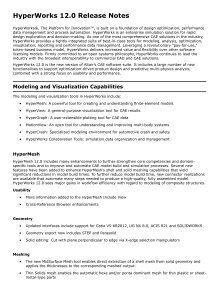
The OptiStruct program, developed by Jeff Brennan, is based on the way human bones grow. She’s co-founder of the Biomimicry Institute, of Missoula, Mont., which states its mission is to promote the transfer of ideas, designs, and strategies from biology to sustainable human systems design. The program does this in the same way bones grow to be as light and strong as possible, says Janine Benyus.

The tool is itself based on algorithms derived from a natural, biological process.Įngineers have been using the OptiStruct topology optimization program from Altair Engineering to optimize their CAD models for weight and strength. Some of them-Airbus, Boeing, and Volvo among them-are using a topology optimization tool to cut excess material and weight. Automotive and aircraft companies-to name just a few-want to decrease the weight of their products as much as possible so they burn less fuel and are easier to handle. Making things lighter, stronger and faster has long been the goal in engineering and biomimetics is one tool that can help. Also, the gecko adhesive, unlike conventional adhesive tapes, does not feel sticky to the touch, Fearing says.

The adhesion is based on the geometry of the fibers: sliding the tape against a surface uncurls the fibers to engage the adhesive while sliding the tape in the opposite direction causes it to unstick, says Ronald Fearing, an electrical engineering professor at the school who led the research.īecause engineers could optimize the geometry of the polypropylene fibers using engineering analysis software, the adhesive can be made much stronger and stickier than a gecko’s feet. They created the self-cleaning adhesive made from the long, slender polypropylene fibers that mimic the millions of hair-like structures called setae on the bottom of a gecko’s toes. The 500 is not only less noisy than earlier versions of the bullet train, it uses 15% less electricity and travels 10% faster, he says.Ī few years ago, researchers in the University of California, Berkeley, Biomimetic Millisystems Lab created an adhesive based on the method geckos use to climb walls or hang from a tree branch from just one toe. Modeled after the kingfisher, the Shinkansen Bullet Train has a streamlined forefront and structural adaptations to significantly reduce noise.ĭesigner Eiji Nakatsu modeled the train’s nose after the beak of the kingfisher bird, which dives from air to water with very little splash thanks to its aerodynamic beak. For the 500, designers wanted a fast train that ran quieter than earlier models. This train was developed in 1992 to test technologies for future bullet trains.
Mbd solidthinking inspire series#
But they can crib from nature’s design methods and at least one form of CAD and analysis technology-itself based on biomimicry-can help.Īdvances in additive manufacturing techniques mean the unusual geometries found in nature can be attempted and feasibly manufactured today.įor a modern-day example of biomimicry (that is, engineers drawing upon biology for their designs), look at the 500 Series Shinkasen Japanese bullet trains, which can reach speeds up to 200 miles per hour. Nature has had eons to perfect its systems and shapes. When engineers take a biomimetic approach to their projects, they’re taking inspiration from how plants and animals, even the microbes around us, work.


Want an example of efficient, environmentally friendly design? Look to nature.
Mbd solidthinking inspire software#
And one software program-also inspired by nature– optimizes the CAD model for the job at hand Engineers are increasingly turning to the already perfected designs found in nature to create lightweight and optimized products.


 0 kommentar(er)
0 kommentar(er)
